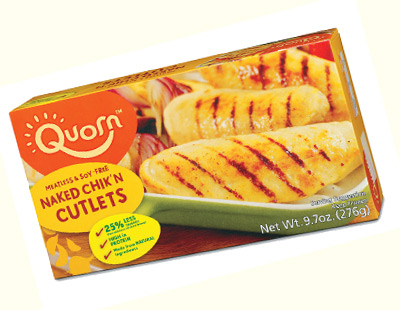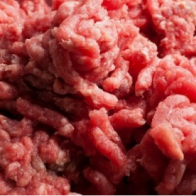 Fans of mock meat products should take notice of the latest uproar over Quorn products. According to the Center for Science in the Public Interest (CSPI), the multinational company, which is the world’s largest producer of mycoprotein, is facing a public relations nightmare for not alerting customers to the possible allergic reaction to their products.
Fans of mock meat products should take notice of the latest uproar over Quorn products. According to the Center for Science in the Public Interest (CSPI), the multinational company, which is the world’s largest producer of mycoprotein, is facing a public relations nightmare for not alerting customers to the possible allergic reaction to their products.
A story on MSNBC details the nightmare one customer experienced after eating the popular Chik’n product. This incident was not the first episode, according to CSPI, who has led a ten-year campaign against Quorn. CSPI wants the Food and Drug Administration to take a thorough look at Quorn’s fungus-based meat substitutes, which, in watchdog group’s opinion, continue to give consumers digestive issues.
Quorn products, sold at popular grocery chains including Whole Foods, come in the shape of artificial “Chik’n” patties or nuggets – or even cylindrical beef approximations or turkey “roasts.” The main ingredient is a so-called mycoprotein — protein extracted from a microscopic fungus. Quorn polarizes vegetarians who want the meaty texture but don’t want to sacrifice their health.
CSPI’s executive director Michael Jacobson told the FDA, “we believe, and we suspect that any reasonable person would believe, that any novel food ingredient that causes hives, anaphylactic reactions, or vomiting so violent that blood vessels burst, cannot, indeed, must not, be considered by the FDA to be ‘generally recognized as safe.’”
Even though it’s commendable what the CSPI is doing on behalf of the consumer, the FDA’s gross ineptitude suggests that they are only slightly concerned with the relatively small amount of people, mostly vegetarian and poor folks, who have, what amounts to, an allergic reaction to Quorn’s product.
Just two months ago, there was over 131,000 pounds of ground beef recalled in the state of Ohio alone. Eggs, chicken, spinach, and dairy are all protein products that have consistent contamination issues, forcing recalls every month to prevent possible fatal consequences. Fortunately, no one has died from mycoprotein contamination. But since it is a serious concern when a product continues to cause such pain and discomfort to consumers, the FDA should not wait until someone dies before they take a real look at Quorn.
So, putting this latest scare in perspective, let’s keep our eyes open and continue to educate ourselves on food products that are pushed as healthy alternatives, especially if they are sold at grocery stores.
*Mycoprotein means protein from fungi. It can be used as part of any meal, particularly vegetarian. The main mycoprotein on sale in Europe and North America is called Quorn. It was originally developed as a food source to combat food shortages.
To make protein, nitrogen (in the form of ammonia) is added, and vitamins and minerals are needed to support growth. The vat is kept at a constant temperature, also optimized for growth; The fungus can double its mass every five hours.
The fermentation vat is filled with the growth medium, and then inoculated with the spores. When the desired amount of mycoprotein has been created, the growth medium is drawn off from a tap at the bottom of the fermenter. The mycoprotein is separated and purified. It is a pale yellow solid with a faint taste of mushrooms. Different flavours and tastes can be added to the mycoprotein to add variety.






